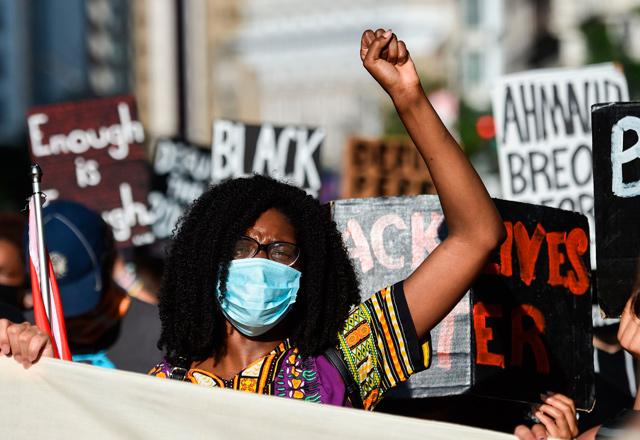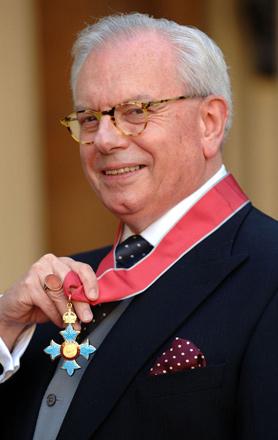You are here
‘Harlem of the South’ in Texas declared a heritage site
By AFP - Jun 22,2021 - Last updated at Jun 22,2021

A historic Black neighbourhood in Houston, Texas designated a landmark just as the United States observes a new national holiday remembering the end of slavery (AFP photo)
HOUSTON — A Houston neighbourhood founded in the 19th century by former slaves has become the Texas city’s first heritage district, just as the United States marks a new national holiday commemorating slavery’s end.
This status for Freedmen’s Town highlights the rich history of a place that has been called the “Harlem of the South”, a reference to the New York district synonymous with Black American culture.
“I can think of no better community to designate as Houston’s first heritage district than Freedmen’s Town, and no better day than Juneteenth to share the good news,” Mayor Sylvester Turner, who is Black, said on Wednesday after the city approved the designation.
With little advance warning, President Joe Biden signed a bill this week making June 19 a national holiday for Juneteenth, when the last enslaved African Americans in 1865 learned that they were free.
It was on that day that Union Army general Gordon Granger informed African Americans that slavery was abolished in Texas, where president Abraham Lincoln’s Emancipation Proclamation of 1862 had yet to be enforced nearly three years later.
Freedmen’s Town rose up after that proclamation as hundreds of newly freed slaves left the Texas and Louisiana plantations and began a new life in Houston.
“They settled down on the Southern banks of the Buffalo Bayou. It was wooded and swampy fields nobody wanted and that they managed to make it livable,” Charonda Johnson, vice-president of the Freedmen’s Town Association, told AFP during a visit to the district.
A UNESCO
site some day?
By the early 20th century, Freedmen’s Town was bustling. It boasted thousands of residents, more than 400 shops, restaurants as well as jazz and blues clubs. Gospel music rang out from its churches.
It was then that it received the nickname “Harlem of the South”, the New York neighbourhood that was also growing at the time.
Freedmen Town’s pretty wooden houses stretched further and further, thanks to the skills of the carpenters and other African American workers who had built mansions for white land and slave owners.
Zion Escobar, executive director of the Houston Freedmen’s Town Conservancy, radiated excitement over what the heritage designation will mean for the work she started three years ago with the founding of her association.
Escobar, who grew up in the Houston area, listed the many projects afoot for Freedmen’s Town: fixing up houses and roads, building a visitors centre, creating an augmented reality app for people to get a better feel for what the neighbourhood used to be like, and getting Freedmen’s Town on the UNESCO list of world heritage sites.
Just in the small heart of the neighbourhood, there are some 15 points of interest — churches, homes, cemeteries and a street with bricks arrayed in patterns that paid tribute to religious symbols of the Yoruba people of west Africa.
The ‘Emancipation Trail’
“The inhabitants had to petition to have the streets paved and some of them participated in the laying of the bricks in 1914,” said Escobar.
In 2014, at a time when people were less sensitive to this heritage, the city council voted to have those bricks removed, Escobar said. She shows a photo of an activist lying in the street to block that project.
In the end a judge let the bricks stay where they are. And today you can walk along that street and see the skyscrapers of downtown Houston not far away.
Some Black families still rent homes in Freedmen’s Town but over the decades most have moved away as gentrification caused housing prices to rise.
But, said Escobar, “with a big diversity of origins, the population that lives here now is really eager to put a light on this Black history.”
She said Freedmen’s Town will soon become one of the last phases of an “Emancipation Trail” project that will be managed by the federal government’s parks department.
The trail refers to the 80 kilometres that separate Houston and the city of Galveston, where the Juneteenth declaration was made in 1865.
The project, now under study, “answers the question of what happened when this people had their freedom”, said Escobar.
“There are not very many substantial exhibitions about Black history done by the National Park Service,” she said. “That’s part of why they are here: To acknowledge this is part of our national story.”
Related Articles
WASHINGTON — Protesters in Washington toppled a statue of a Confederate general late Friday, after nationwide rallies to demand racial justi
LOS ANGELES — Less than a year after Will Smith shocked millions around the world by slapping Chris Rock at the Oscars, his new film “Emanci
LONDON — A British royal historian who said slavery was not genocide has quit his honourary position at Cambridge University and been droppe



















